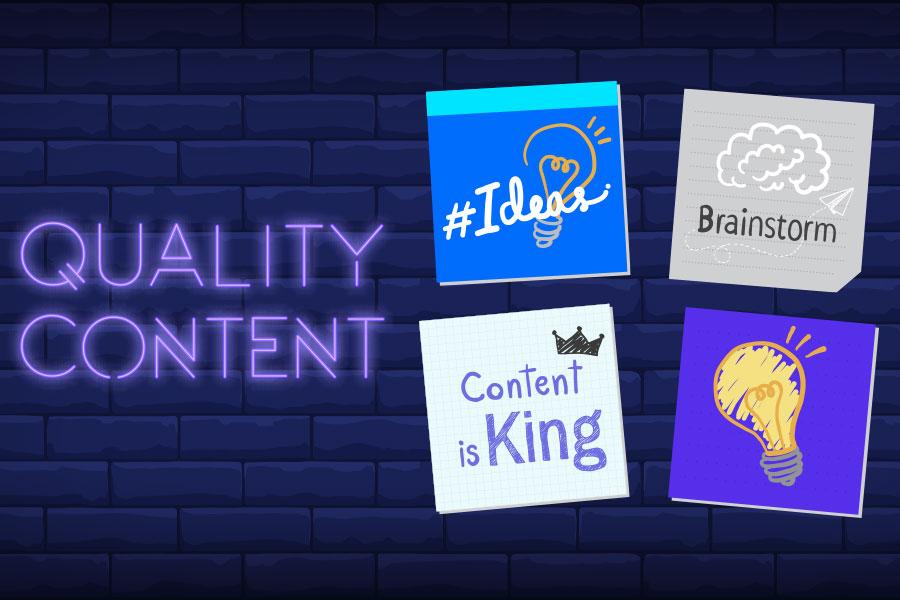7 E-commerce SEO Mistakes You Must Avoid in 2025
Table of contents
The world wide web is as vast as it is competitive; achieving a favorable SEO ranking is no small feat. The intricate web of considerations can often lead businesses astray, diverting efforts into less fruitful avenues and neglecting crucial aspects. Navigating the world of ecommerce SEO demands a keen awareness of the pitfalls that lay ahead.
As we delve into 2023, the challenges remain as pressing as ever. To shed light on the path to effective optimization, this article explores seven of the most prevalent SEO mistakes that ecommerce business owners frequently encounter. By identifying these missteps and embracing alternative strategies, you can empower your online venture with the tools needed to thrive in the competitive digital sphere.
Join us as we uncover these common pitfalls and illuminate how to enhance your ecommerce SEO strategy.
What is E-Commerce SEO?
Ecommerce SEO entails the meticulous process of optimizing your online store to gain preferential treatment from search engines, ensuring that your brand is prominently recommended to individuals seeking similar products. With a staggering 75% of consumers confining their exploration to the first page of search results, securing a spot among the top results becomes imperative to harnessing valuable organic traffic.
This pursuit of enhanced visibility is an enduring endeavor, as the realm of Ecommerce SEO is an ever-evolving game. Staying attuned to the latest trends within the ecommerce landscape while continuously evaluating and monitoring the outcomes of your SEO endeavors remains paramount.
7 SEO Mistakes to Avoid
There is a very real learning curve within these practices. The following discourse highlights seven critical Ecommerce SEO services blunders that demand avoidance this year. Additionally, we present the necessary corrective measures that should be embraced to pave the way for success.
1.Slow Site Speed
The speed at which your web pages load plays an important role in determining your ranking, as affirmed by Google. Websites burdened by sub-optimal load times not only risk facing a decline in their perceived value by search engines, but they also stand to lose the patience of potential customers who may opt to explore alternatives.
While the integration of plug-ins can enhance user experience and bolster conversion rates, a surplus of activated plug-ins that go unused can notably impede the swiftness of your site's performance. In this context, adhering to Google's recommendation of a maximum load time of two seconds becomes crucial, as anything exceeding this threshold could adversely affect your search engine rankings.
To address this concern, it's essential to adopt the following measures:
- Optimize Images with Compression: Images are often a significant contributor to page load times. You can significantly reduce loading times by compressing images without compromising their quality.
- Reduce Redirects: Excessive redirects can lead to increased load times. Streamlining your website's structure to minimize unnecessary redirects can boost loading speed.
- Remove Unnecessary Plug-ins: Regularly audit your plug-ins and deactivate or remove those that are surplus to your site's requirements. This helps eliminate any drag on performance.
- Use Fewer Widgets: While widgets can enhance functionality, an overabundance can slow down your website. Prioritize essential widgets and remove any that do not contribute significantly to user experience.
- Upgrade Your Hosting: The quality of your web hosting can profoundly impact loading speeds. Upgrading to a hosting solution that offers better resources and performance can lead to marked improvements.
- Utilize Google PageSpeed Insights Tool: This tool, provided by Google, offers a free and comprehensive evaluation of your page loading times. It identifies areas for improvement and provides actionable insights to enhance performance.
Ensuring your ecommerce site adheres to Google's speed standards provides a seamless and efficient user experience that keeps potential customers engaged and satisfied.
2. Inefficient Site Structure
An ineffective site structure stands as a swift path to losing potential customers. When pages within your website are buried beyond three clicks from each other, confusion can ensue, leading customers astray. A convoluted domain name, intricate site arrangement, and unintuitive menus steer customers toward seeking desired products elsewhere.
In the realm of Ecommerce, two prevalent structural approaches emerge. The "Hierarchical" structure features fewer primary categories while relying on multiple sublevels. This often results in longer, more specific URLs that distance users from the homepage. Conversely, the "Flat" structure incorporates more prominent categories, ensuring each page is accessible with minimal clicks.
To cultivate an optimal approach, consider the following steps:
- Optimize Subpages: Each subpage warrants thorough optimization, given its distinct treatment by both users and search engines.
- Group Relevant Products: Organize related products together to streamline navigation and assist users in locating items efficiently.
- Craft User-Friendly Navigation: Develop an intuitive and user-centric navigation menu, making it easier for visitors to traverse your site.
- Prioritize User Experience (UX) and User Interface (UI): A user-friendly interface and an enjoyable browsing experience foster customer engagement and loyalty.
- Strategic Linking: Establish relevant links from the homepage to applicable pages, simplifying the browsing journey for users.
Consider Ecommerce Hosting Providers: Exploring specialized ecommerce hosting services can bolster your site's structural foundation.
In the contemporary landscape, numerous ecommerce platforms offer intuitive tools to facilitate the setup of an effective site structure. Adhering to these strategies can aid you in fashioning a site arrangement that resonates with your brand and enhances user engagement, thereby nurturing a more productive relationship with your online customer base.
3.Lack of Mobile SEO
While dedicating hours to crafting an exquisite desktop setup for your website is commendable, its impact could be rendered futile if you neglect to extend the same effort to your mobile version.
Failing to prioritize the mobile experience translates to forfeiting a significant portion of potential clientele, considering that mobile devices account for a notable 63% of organic search engine visits.
In light of this, take heed of the following actionable steps:
- Embrace Mobile Friendliness: Acknowledge that Google has been prioritizing crawling, indexing, and ranking the mobile version of your site since 2019. Thus, ensure your site boasts mobile-friendly design and responsiveness.
- Choose Responsive Layouts or Ecommerce Themes: Opt for a responsive layout or an ecommerce WordPress theme, as these elements inherently adapt to various screen sizes, enhancing the user experience across devices.
- Conduct Mobile Self-Checks: Personally evaluate the mobile browsing experience on your site, identifying any hitches or areas that necessitate improvement.
- Simplify and Reduce Clutter: Streamline the mobile interface by reducing unnecessary clutter, focusing on presenting essential information succinctly.
- Prioritize Legibility: Utilize a larger font size to enhance readability on smaller screens, ensuring content remains accessible and engaging.
- Engage Web Developers: If required, enlist the services of proficient web developers to fine-tune your mobile-friendly design.
Remember, you need not navigate this endeavor in isolation. You can embrace mobile optimization, tap into a substantial portion of your potential customer base, and position your ecommerce venture for success in an increasingly mobile-driven landscape.
4. Dwindling Content Quality
Even the most meticulously devised ecommerce SEO strategy is rendered inconsequential if it lacks the bedrock of valuable content. Ecommerce SEO's essence resides in captivating both search engines and consumers. When your content fails to offer easy comprehension and tangible answers, your authority wanes in the eyes of both search engines and your audience.
Avoid falling into the pitfall of generating subpar content by steering clear of these common traits:
- Unoriginal Content: Without contributing fresh perspectives, your thoughts risk vanishing amid the digital noise, rendering them devoid of value.
- Short Content: While extensive word counts aren't mandatory, excessively brief content might signal to Google that your response lacks substantive insight.
- Keyword-Stuffed Content: Although keywords hold importance, don't compromise content quality by saturating it with excessive keywords.
Aim to foster high-caliber content across all pages, including product descriptions and title tags. Devote attention to crafting detailed product pages replete with size charts, distinctive product names, and informative descriptions. For inspiration, when content ideas run scarce, monitoring trending ecommerce topics can provide valuable direction.
In lieu of these pitfalls, consider these proactive measures:
- Customer-Centric Writing: Envision the queries and needs of your customers as you create content. Preemptively addressing their concerns and embracing trending topics can forge stronger connections.
- Leverage Long-Tail Organic Search Strategy: Prioritize organic traffic by tailoring your strategy to cater to specific, long-tail search queries. This approach has yielded significant growth for many.
- Harness AI Tools: The assistance of AI tools can be harnessed to develop a comprehensive content marketing strategy, ensuring your content resonates with your target audience.
- Engage Freelance SEO Experts: Collaborating with freelance SEO specialists can offer expert guidance in crafting content that maximizes its impact on both search engines and consumers.
The content stands as the conduit for engagement and conversion. By weaving customer-centricity, trend awareness, and quality into your content, you position your ecommerce venture to seize the attention of search engines and captivate the hearts of your audience.
5. Incorrect Targeted Keywords
Mistakenly targeting the wrong keywords is a perilous misstep that can hinder your ecommerce SEO progress. Blindly pursuing only the most popular keywords can prove counterproductive unless your business holds substantial clout. Given the fierce competition prevalent in the digital sphere, it's pivotal to recognize the potential of low-ranking keywords, as they can channel remarkably relevant traffic to your online store.
It's a common oversight for many enterprises to overlook these low-competition keywords. Often, new ecommerce businesses dismiss them in favor of pursuing high-ranking terms, underestimating the potential of these less competitive options.
If you're aiming to rectify this, consider the following strategic adjustments:
- Thorough Keyword Research: Undertake comprehensive keyword research and analysis to discern the most pertinent terms for ranking.
- Embrace Long-Tail Keywords: Incorporate long-tail keywords that offer specificity and relevance to your products or services, capturing more targeted traffic.
- Incorporate Information and Product-Focused Keywords:Blend a mix of keywords that encompass both informational queries and those directly tied to products. This strategy caters to diverse user intents.
- Craft Keyword-Centric Product Pages: Devote specific product pages to singular, relevant keywords, optimizing content, meta descriptions, and other on-page elements around these terms.
This endeavor optimizes your chances of ranking and channels meaningful traffic that is more likely to convert, fostering the growth and success of your online store.
6. Ignoring Backlinking
Disregarding the significance of backlinks represents a substantial oversight, as these links play a pivotal role in signaling your website's trustworthiness and authority to search engines. A surprising number of ecommerce sites fail to incorporate a comprehensive backlink strategy, inadvertently passing up valuable opportunities to engage potential customers.
Backlinks are the threads that weave your site's credibility fabric in the eyes of search engines. However, attempting to manipulate the system through spammy backlink tactics is inadvisable. Not all backlinks hold equal value—quality prevails over quantity, rendering a few high-quality backlinks more valuable than a multitude of subpar ones.
Instead of undermining the authenticity of your site, adopt these proactive steps.
- Strategically Distribute Backlinks: Direct your focus towards key pages, including the homepage, category pages, and product pages, as these hold immense value in bolstering your overall site authority.
- Institute a Thoughtful Backlink Strategy: Invest in cultivating a purposeful backlink strategy that aligns with your brand's identity and goals. Be mindful of the quality and relevance of the links you cultivate.
- Harvest Organic Backlinks through Quality Content: While investing in strategies is important, recognize the potency of attracting organic backlinks through the creation of valuable, informative content that resonates with your audience.
Incorporating an effective backlink strategy can potentially fortify your ecommerce website's credibility, drawing the attention of search engines and instilling a sense of trust in potential customers. You can elevate your site's authority and harness its full potential within the competitive digital forefront.
7. Lack of Social Media Strategy
A dynamic social marketing strategy stands among the paramount avenues through which ecommerce enterprises can nurture their brand's growth. However, the pervasive emphasis on keywords often obscures the significance of this multifaceted marketing approach. A captivating logo, while valuable, is only a fraction of the equation—crafting a strategy that ensures your brand garners initial visibility is equally pivotal.
Employing social media presents a potent opportunity to channel traffic to your ecommerce store while concurrently bolstering brand awareness. Overlooking engagement on these platforms results in forfeiting chances for customer service interactions and the acquisition of valuable SEO audit backlinks.
To reorient your focus, initiate an ecommerce social strategy with these strategic steps:
- Sustain an Active Presence: Cultivate a consistent and vibrant presence across a spectrum of social media platforms, engaging your audience and fostering brand recognition.
- Harness Influencer Marketing: Invest in influencer collaborations to extend your brand's reach and credibility, leveraging the influencer's audience to elevate your visibility.
- Execute Promotions: Employ promotions that entice users, offering free products in exchange for reviews. This not only bolsters your brand's reputation but also generates authentic content.
Shift your perspective and embrace the power of social media to open a gateway to unprecedented opportunities for growth and brand enhancement. Through a calculated approach, you can amplify customer engagement, stimulate traffic, and forge enduring connections that bolster your ecommerce venture's ascent.
In Conclusion
Success hinges on a multifaceted approach that transcends the confines of mere keyword optimization. This journey demands an orchestrated blend of strategies that encompass valuable content, seamless mobile experiences, thoughtful site structures, and a proactive stance towards backlinks and social marketing. By avoiding common pitfalls and embracing the road less traveled, your ecommerce venture can rise above the competition and flourish.
Saffron Edge stands ready to guide those seeking a trusted partner in navigating these uncharted waters. With a wealth of expertise in SEO and digital marketing, we understand the nuances that can transform your online store into a thriving business. Take the first step towards optimized success by claiming your free SEO audit for your website today. Let us help you uncover the hidden potentials and opportunities that lie within your digital presence. Your journey to ecommerce excellence begins here.
Drive Exceptional Growth without an In-House Marketing Team
We drive business growth by optimizing every inbound channel to attract and convert high-quality clients for you
Share with Friends
Grow Your E-Commerce Sales
Optimize your store and attract more customers with expert strategies.
Talk to ExpertsSubscribe to our newsletter
Get fresh stories, case studies, and
advice
from successful creators and industry experts.

Subscribe now

Grow Your E-Commerce Sales
Optimize your store and attract more customers with expert strategies.
Talk to Experts






